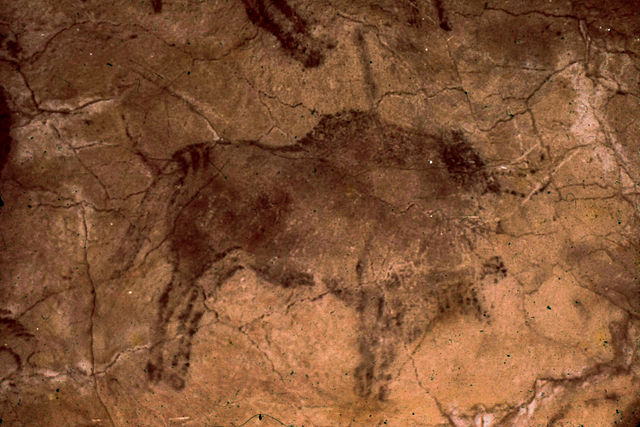With the documentary Las paredes hablan, Carlos Saura brings to the screen the art of the walls to show us a different way of looking at the relationship between the prehistoric graffiti discovered in many caves and the graffiti that have populated the walls of many cities over the last half century.

Poster for the documentary film by Carlos Saura
“After visiting some of the most significant caves, we discovered that there was a certain relationship between this impulse to paint on the walls and the graffiti of today, and we started to work on it”, says the award-winning director about his, for the moment, latest work.
That graffiti began in prehistoric times and that street art, urban art, graffiti, is its current expression is something that has been affirmed for years by aerosol activists, academics and researchers who consider it a living part of citizen participation in public space.
Painting walls is a particular form of artistic expression that is valued by some and reviled by others. In Abya Yala, we know a lot about graffiti, walls and words, about communicating by expressing oneself on walls by those who cannot find any other way to speak and say what they think and feel.
With the Spanish director’s film, it is possible that these graffiti will take on more value and that what the walls say to us will be listened to more. It is possible that urban art will cease to be seen as vandalism and will be considered as a graphic expression of popular sentiment.
The title of the film reaffirms the proposal of the book Paredes que comunican published in Colombia in 2021. A text that collected the narratives of the artists of the walls and that is also a vindication of the expressions captured there; in this case, to highlight their role as citizen communication, to raise consciousness and mobilise and try to achieve the social changes that are so necessary.
Fourteen locations, from Atapuerca to the walls of Barcelona or from Altamira to the walls of Madrid, provide the context for the film that Saura directs and stars in and in which, among others, personalities such as the paleoanthropologist Juan Luis Arsuaga, the painter Miquel Barceló, the graffiti artists Zeta and Suso33, the art curator Anna Dimitrova or the writer and graffiti artist Musa 71 take part.
The graffiti are, as the original song from Saura’s film says, “listening to the walls sing without words”. Because walls communicate and express, and reading and listening to them means giving them “a place in the vision and a space in the memory that allows us to remember that communication [of the walls], like beauty, is in the streets and in the people who live and paint them”.
Las paredes hablan has been nominated in twelve categories for the Goya Awards 2023, including Best Film, Best Director, Best Original Screenplay, Best Cinematography and Best Original Score. Saura, who will receive the 2023 Honorary Goya Award, has produced on this occasion an unusual “unique choral artistic choreography”.
Barceló confesses to the Aragonese director at one point in the film that “art is always contemporary and we always do it for the same reason”. Look through the documentary and find those reasons why we should listen to what the walls are saying.
“I have painted you in colours that will last for many years.
To face the wall and draw
There is no secret between our souls
Why do I paint you?
May they never dare to erase you and hear you sing without words”.
(from the song “Alma de artista”, from the original soundtrack of the film)










